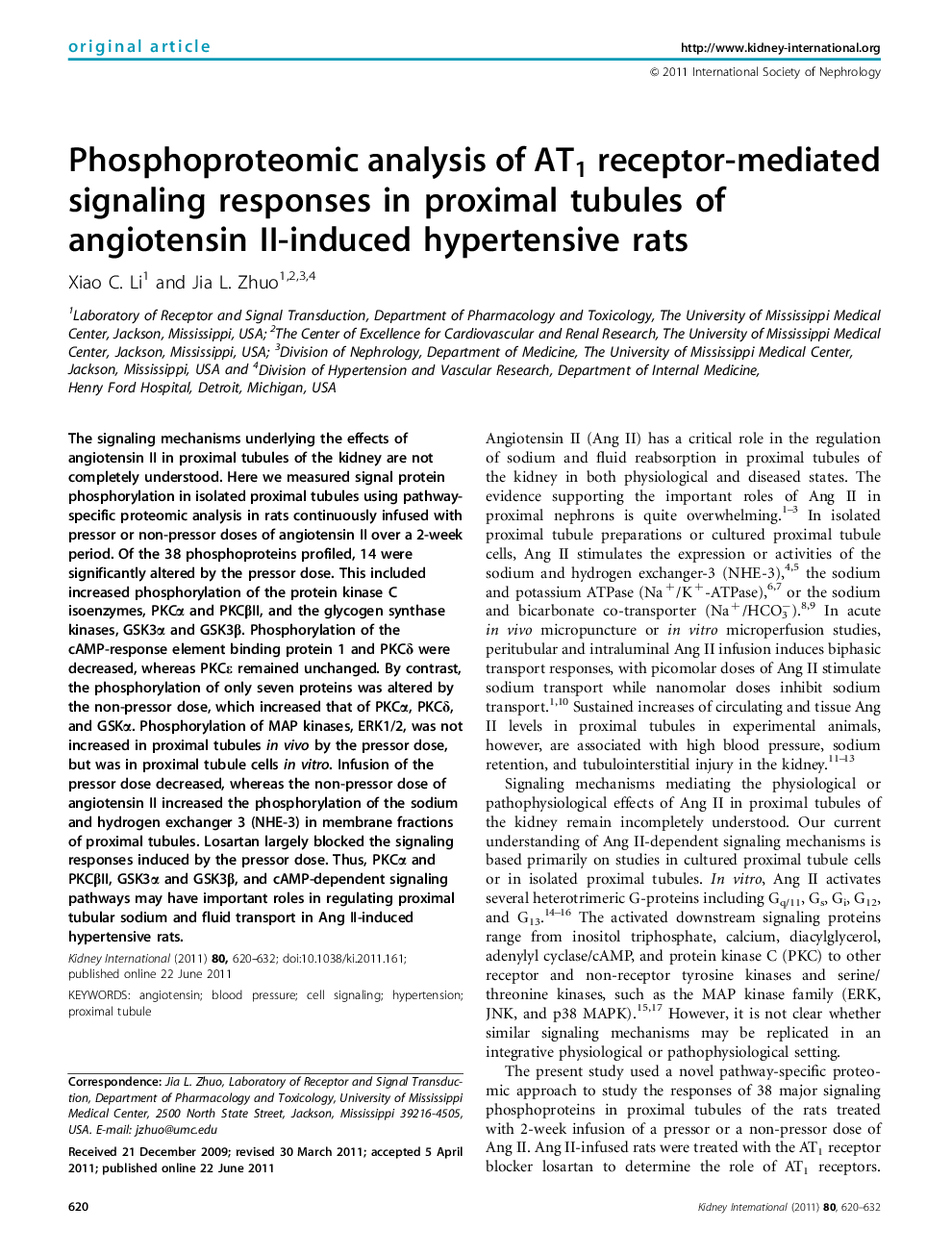| Article ID | Journal | Published Year | Pages | File Type |
|---|---|---|---|---|
| 3884630 | Kidney International | 2011 | 13 Pages |
The signaling mechanisms underlying the effects of angiotensin II in proximal tubules of the kidney are not completely understood. Here we measured signal protein phosphorylation in isolated proximal tubules using pathway-specific proteomic analysis in rats continuously infused with pressor or non-pressor doses of angiotensin II over a 2-week period. Of the 38 phosphoproteins profiled, 14 were significantly altered by the pressor dose. This included increased phosphorylation of the protein kinase C isoenzymes, PKCα and PKCβII, and the glycogen synthase kinases, GSK3α and GSK3β. Phosphorylation of the cAMP-response element binding protein 1 and PKCδ were decreased, whereas PKCε remained unchanged. By contrast, the phosphorylation of only seven proteins was altered by the non-pressor dose, which increased that of PKCα, PKCδ, and GSKα. Phosphorylation of MAP kinases, ERK1/2, was not increased in proximal tubules in vivo by the pressor dose, but was in proximal tubule cells in vitro. Infusion of the pressor dose decreased, whereas the non-pressor dose of angiotensin II increased the phosphorylation of the sodium and hydrogen exchanger 3 (NHE-3) in membrane fractions of proximal tubules. Losartan largely blocked the signaling responses induced by the pressor dose. Thus, PKCα and PKCβII, GSK3α and GSK3β, and cAMP-dependent signaling pathways may have important roles in regulating proximal tubular sodium and fluid transport in Ang II-induced hypertensive rats.
